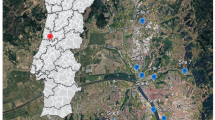Abstract
Changes in flora biodiversity are a dilemma facing managers in order to cope with challenges of extinction or endangering plant species as well as replacement by invasive species. Such problems can occur in the region as disruption of ecosystem balance. The first step of proper management of a watershed is obtaining accurate information about plant communities and their dominance and biodiversity status. Such information will help decision makers to adopt an appropriate management approach. Accordingly, the current study was conducted to detect various types of plant species in Zanjanrood Watershed. For this porous, quadrate and transect methods were applied to determine available plant species in the region. Afterwards, Shannon and Simpson’s Reciprocal indices were used to specify the biodiversity status of the identified communities. The calculation results revealed 3.19 and 5.98 for Shannon and Simpson’s Reciprocal indices, respectively. As the results suggested, there has been a downward trend in biodiversity status over the last 20 years. Such a deteriorating condition has been accelerated rise in recent years so that the non-palatable species are rapidly replaced by the palatable ones due to uncontrolled overgrazing of livestock. If management is not based on principles of sustainability in the region, the watershed will experience an extreme poverty of land cover. The findings would be so helpful to achieve an appropriate strategy in order to conserve the biodiversity in a sustainable manner.




Similar content being viewed by others
References
Arévalo, J. R., de Nascimento, L., Fernández-Lugo, S., Mata, J., & Bermejo, L. (2011). Grazing effects on species composition in different vegetation types (La Palma, Canary Islands). Acta Oecologica, 37(3), 230–238.
Arthur, A. D., Pech, R. P., Davey, Ch., Yanming, J. Z., & Hui, L. (2008). Livestock grazing, plateau pikas and the conservation of avian biodiversity on the Tibetan plateau. Biological Conservation, 141(8), 1972–1981.
Biggs, R., Simons, H., Bakkenes, M., Scholes, R. J., Eickhout, B., van Vuuren, D., et al. (2008). Scenarios of biodiversity loss in southern Africa in the 21st century. Global Environmental Change, 18(2), 296–309.
Fischer, A., & van der Wal, R. (2007). Invasive plant suppresses charismatic seabird—the construction of attitudes towards biodiversity management options. Biological Conservation, 135(2), 256–267.
Giam, X., Bradshaw, C. J. A., Tan, H. T. W., & Sodhi, N. S. (2010). Future habitat loss and the conservation of plant biodiversity. Biological Conservation, 143(7), 1594–1602.
Jiang, Y., Kang, M., Zhu, Y., & Xu, G. (2007). Plant biodiversity patterns on Helan Mountain, China. Acta Oecologica, 32(2), 125–133.
Johns, T., & Eyzaguirre, P. B. (2007). Biofortification, biodiversity and diet: A search for complementary applications against poverty and malnutrition. Food Policy, 32(1), 1–24.
Lanta, V. (2007). Effect of slug grazing on biomass production of a plant community during a short-term biodiversity experiment. Acta Oecologica, 32(2), 145–151.
Naqinezhad, A., Jalili, A., Attar, F., Ghahreman, A., Wheeler, B. D., Hodgson, J. G., et al. (2009). Floristic characteristics of the wetland sites on dry southern slopes of the Alborz Mts., N. Iran: The role of altitude in floristic composition. Flora-Morphology, Distribution, Functional Ecology of Plants, 204(4), 254–269.
O’Neill, K. M., Olson, B. E., Rolston, M. G., Wallander, R., Larson, D. P., & Seibert, C. E. (2003). Effects of livestock grazing on rangeland grasshopper (Orthoptera: Acrididae) abundance. Agriculture, Ecosystems and Environment, 97(1–3), 51–64.
Pickering, C. M., & Hill, W. (2007). Impacts of recreation and tourism on plant biodiversity and vegetation in protected areas in Australia. Journal of Environmental Management, 85(4), 791–800.
Tian, Z., Chen, W., Zhao, Ch., Chen, Y., & Zheng, B. (2007). Plant biodiversity and its conservation strategy in the in-undation and resettlement districts of the Yangtze Three Gorges, China. Acta Ecologica Sinica, 27(8), 3110–3118.
van Diggelen, R., Sijtsma, F. J., Strijker, D., & van den Burg, J. (2005). Relating land-use intensity and biodiversity at the regional scale. Basic and Applied Ecology, 6(1), 145–159.
Author information
Authors and Affiliations
Corresponding author
Rights and permissions
About this article
Cite this article
Madani, N., Ghoddousi, J. & Madani, S. Flora biodiversity change detection: a case study. Environ Dev Sustain 15, 1271–1279 (2013). https://doi.org/10.1007/s10668-013-9438-0
Received:
Accepted:
Published:
Issue Date:
DOI: https://doi.org/10.1007/s10668-013-9438-0




